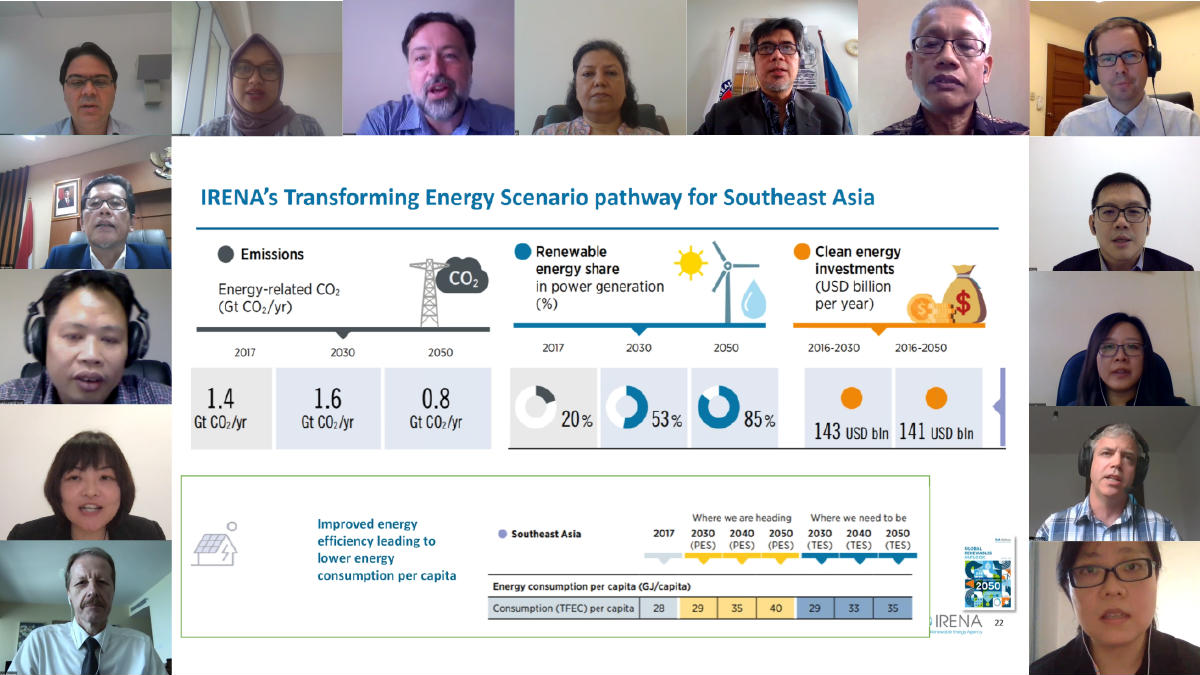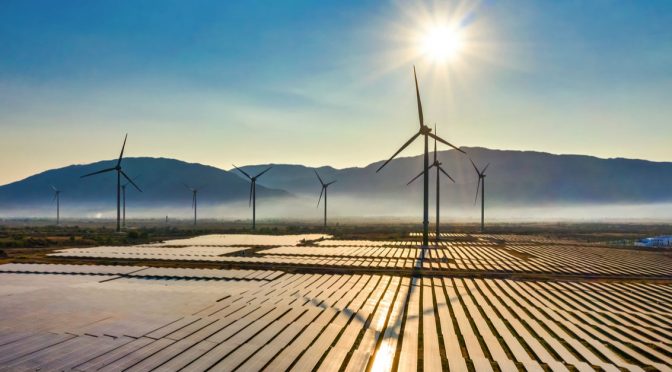IRENA and ASEAN Centre for Energy webinar brings more than 160 participants together to discuss the opportunities low-cost renewables offer the region
Meeting future energy demand in the Association of Southeast Asian Nations (ASEAN) is a high priority in the region. With current indigenous fossil fuel resources incompatible with climate and sustainable development goals, and the COVID-19 pandemic causing fuel price volatility and economic uncertainty, the region can now seize the moment to put renewable energy sources at the forefront of its energy planning and growth agenda.
That was the focus of a joint-webinar hosted by the International Renewable Energy Agency (IRENA) and the ASEAN Centre for Energy (ACE). With IRENA’s recent Global Renewables Outlook (GRO) report and Power Generation Cost 2019 report framing the discussion, the virtual event entitied ‘Accelerating the Southeast Asian Energy Transformation’ brought together more than 160 participants from across the ASEAN region and further afield, to identify ways to catalyse the energy transition in Southeast Asia.
Under IRENA’s GRO, Southeast Asia’s economy could by grow an additional 2.9 per cent above current plans and policies by 2050. The Agency’s ‘Transforming Energy Scenario’ is a model that aligns the global energy system with the goals of the Paris Agreement. GRO 2020 shows that Southeast Asia could meet about 41% of all of its energy needs from renewable energy by 2030 and create an additional 6.7 million green jobs by 2050. Participants learned that as a result of dramatic cost reductions, replacing the world’s costliest 500 gigawatts of coal fired power in favour of renewables next year would yield annual savings of up to USD 23 billion per year.
In opening remarks, Gauri Singh, Deputy Director-General of IRENA emphasised that the region stands at a crossroads in terms of its energy future, highlighting that sustainable and affordable energy can be the cornerstone of growth and the pursuit of climate and sustainable development goals for ASEAN countries. Ms Singh pointed to the importance of renewed political will and the adoption of strong policy frameworks to drive the region’s sustainable energy progress.

Dr. Nuki Agya Utama, Executive Director of ACE stressed the region’s commitment to fulfing the Paris Agreement as well as achieving regional goals, including the ASEAN Plan for Action and associated regional energy cooperation frameworks. “We are progressing towards our 23 per cent aspirations renewables target,” he said, adding: “but our current path will leave us 5 per cent short by 2025. With renewables’ costs falling, they can greatly support our economic, climate and sustainable development goals.”
Building new solar is cheaper than building new coal in all countries of the region, noted Ken O’Flaherty, UK COP 26 Regional Ambassador for Asia Pacific and South Asia, highlighting that new coal plants make bad business sense, risk stranded assets, and are incompatible with the Paris agreement. Acknolwedging the need for parties to convene and strengthen cooperation, he said: “Together we can ensure that every country across Southeast Asia has the ability to unlock their renewable energy potential, and pursue clean alternatives to coal power. Under the UK’s Presidency of COP26, in partnership with Italy, our energy transition campaign aims to accelerate the global transition from coal to clean energy. We are working closely with countries, development banks, investors and civil society. We look forward to working closely on COP26 and our energy transition campaign with our key regional partners, including ASEAN institutions, ACE, IRENA, IEA, NDC Partnership and ADB.”
With a view to establishing outcomes, participants heard interventions from high level participants of Indonesia, Viet Nam, Singapore, the Asian Photovoltaic Industry Association and ACE, as well as from UNESCAP, with whom IRENA recently signed a Memorandum of Understanding, and the Global Wind Energy Council, which is a member of IRENA’s Coalition for Action.
Liming Qiao, Asia Director of the Global Wind Energy Council, finds the region’s wind energy potential to be promising, with the market growing at a compound annual growth rate (CAGR) of 40.6% in the last decade —largely driven by the cost reductions and government policies. Sharing other speakers’ view on the importance of policy certainty, she said: “While many countries can have ambitious long-term renewables targets, the right policy frameworks and clarity of those are still missing which hinders the industry progress for the lack of stability. This is a critical roadblock that needs to be resolved for more and larger-scale renewables development in ASEAN.”
In closing, Dr Nuki Aguya Utama, said that growth based on clean sources is one of the region’s highest priorities, and that cooperation is the key. “Regional energy cooperation is crucial to accelerating renewables deployment, with an uneven endowment of renewables potentials across the region. ASEAN will play a role in implementing mitigation measures.”


